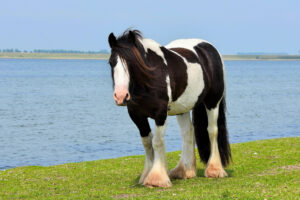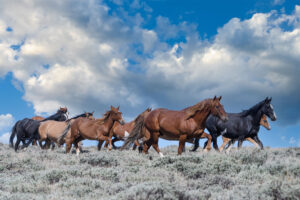
Paint horses and Pinto horses are two popular horse breeds known for their striking coat patterns. While their appearances may be similar at first glance, there are distinct differences between these two breeds. In this article, we will delve into the characteristics, histories, and uses of Paint and Pinto horses, highlighting their unique attributes. Whether you’re an avid equestrian or simply intrigued by these magnificent animals, join us as we explore the fascinating world of Paint and Pinto horses.
The History of Paint Horses: Paint horses have a rich history that can be traced back to ancient times. They are descendants of the horses brought to the Americas by Spanish explorers during the 16th century. These horses carried the genes for unique coat patterns, which eventually led to the development of the breed we now know as the Paint horse. The colorful and distinctive coat patterns of Paint horses have been highly prized throughout history.
Characteristics of Paint Horses: One of the most distinguishing features of Paint horses is their coat patterns, which can vary greatly. These coat patterns are categorized into three main types: overo, tobiano, and tovero. Overo Paints have irregular white markings that usually don’t cross the back of the horse. Tobiano Paints, on the other hand, have large, rounded patches of color that typically cross the horse’s back. Tovero Paints possess a combination of both overo and tobiano patterns.
Apart from their striking coat patterns, Paint horses are known for their versatility and athleticism. They are often used in various disciplines, such as Western pleasure, reining, cutting, and trail riding. Paint horses also excel in speed events, such as barrel racing and pole bending. With their friendly and trainable nature, they make excellent companions and show horses.

The History of Pinto Horses: Pinto horses, like Paint horses, have a long history that can be traced back to ancient times. The term “pinto” refers to any horse with a coat pattern characterized by large patches of white and another color. Pintos can be found in different breeds, but they are not considered a specific breed themselves. The Pinto Horse Association was formed to promote and register horses with these distinctive coat patterns.
Characteristics of Pinto Horses: The coat patterns of Pinto horses can be quite diverse, with various combinations of colors and markings. They can have bold and eye-catching patterns, with the colors blending seamlessly. Pintos come in different sizes and conformations, as they are not limited to a specific breed standard. This variety adds to their charm and appeal.
Pinto horses are known for their gentle temperament and versatility. They are often used for pleasure riding, driving, and as therapy horses. Pintos have a strong presence in the show ring, particularly in disciplines like dressage, hunter/jumper, and eventing. Their eye-catching coat patterns often make them stand out in the arena, captivating both judges and spectators alike.
Comparing Paint Horses and Pinto Horses: While Paint and Pinto horses share some similarities in terms of their coat patterns and colorful appearances, there are distinct differences between the two breeds. The main difference lies in their breed status. Paint horses are recognized as a distinct breed, with their own breed registry and breed standards. Pintos, on the other hand, are not considered a specific breed but are defined by their coat patterns.
Another difference is the extent of white markings on their coats. Paint horses typically have more solid-colored patches, with the white markings often surrounding the colored areas. In contrast, Pinto horses tend to have larger white patches, sometimes covering a significant portion of their bodies.
In terms of usage, both Paint and Pinto horses excel in various disciplines. However, Paint horses have a more established presence in Western disciplines, such as reining and cutting. Pinto horses, on the other hand, are often seen in English disciplines, like dressage and hunter/jumper. Of course, these are generalizations, and individual horses of both breeds can excel in a wide range of activities based on their training and abilities.
Conclusion: Paint horses and Pinto horses are two magnificent breeds that captivate horse enthusiasts with their stunning coat patterns and versatile nature. While Paint horses are recognized as a distinct breed with their own registry, Pinto horses are defined by their coat patterns rather than being a specific breed. Both breeds offer a wide range of uses and excel in various disciplines. Whether you’re drawn to the distinctive patterns of Paint horses or the eye-catching beauty of Pintos, these horses are sure to leave a lasting impression.






